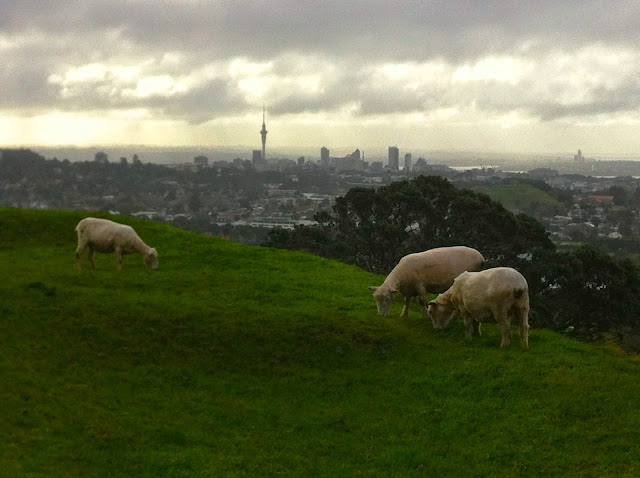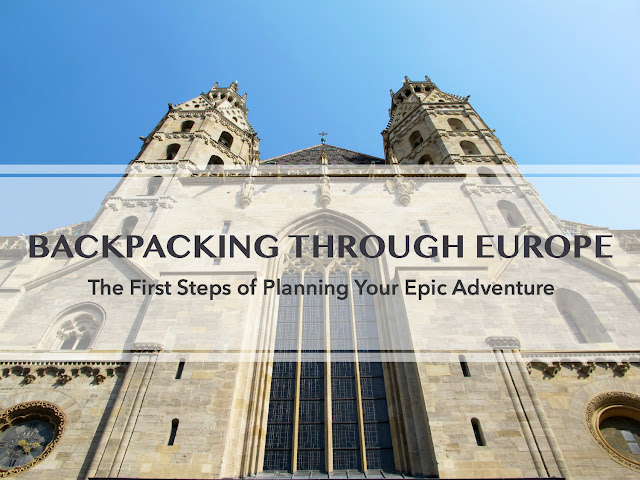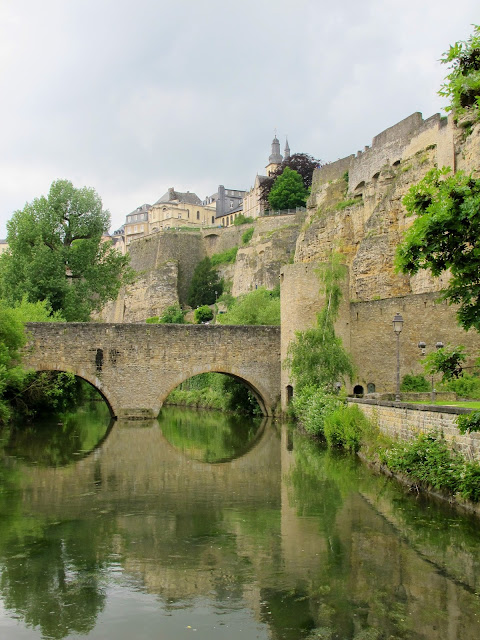Three years ago, I moved to New Zealand on what amounts to little more than a whim. I had just come out of the most emotionally challenging stage of my life and I decided that I needed to get away for a year. Far away! So I spun the globe, bought a plane ticket, traveled 8,000 miles, and arrived in this little island country with two suitcases, no friends, and not a single clue. As it turns out, it was the best decision I have ever made.
Whatever stage of life you find yourself in, if you’re thinking about spending the next year as a long-term tourist in the loveliest country on earth, I want to give you helpful advice on how to make the most of it. As crafty explorers, Christy and I are launching this travel series to address many of the logistical concerns travelers have before embarking on an overseas adventure. For my part, the greatest adventure of my life has been moving to New Zealand and connecting with the heartbeat of Kiwi life; for Christy, her adventures in Europe have made her an incredible resource on how to dance across a continent on a dime.
 |
| View from Waiheke Island toward Rangitoto |
In the coming weeks, Christy and I will outline how to plan for a 3-month backpacking trip in Europe, and a year in New Zealand, respectively, by addressing the issues that matter:
Our hope is that you embark with a plan that makes you feel travel-savvy and safe, so that you can focus on making the most out of every moment without any unpleasant surprises!
- relevant visas
- booking flights and airline information
- valuable tips for specific international customs
- what to pack
- where to go
- what to do
- how to get around
- where to stay
- how to find work
- how to budget
- and all the other ‘ins and outs’ of life abroad, including cell phone plans, how to open a bank account, and how to cope with language barriers
Our hope is that you embark with a plan that makes you feel travel-savvy and safe, so that you can focus on making the most out of every moment without any unpleasant surprises!
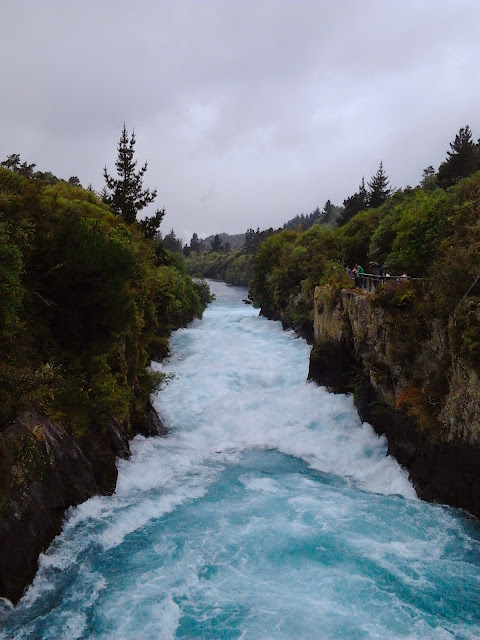 |
| Huka Falls |
Sorting Your Visa
If you are planning to visit New Zealand for a period of 3 months to a year and you possess a passport from one of these 42 qualifying countries, you will be eligible to apply for a visa under the Working Holiday scheme. Each country is given specific eligibility requirements for age, duration of stay, and proof of available finances; do thoroughly explore your country’s rules before applying.
For Americans, it is generally easy to acquire a one-year Working Holiday visa, provided you have:
- not been granted one before (you get one per lifetime, so use it well!)
- are not a hoodlum (“meet character requirements”)
- are between the ages of 18-30
- and have proof of $4,200 in available funds
Wait, what? Yes, you may be expected to prove your financial status upon entering the country. Similar to Christy’s explanation for why you should have a recent bank statement on your person at immigration counters, a sufficient bank balance proves you are able to cover expenses for a year of living in NZ, as well as purchase a return flight home. What Kiwis do not want is your gap year to turn into a situation in which you are a broke free-loader, or worse, an overstayer. You are, in most cases, not required to show proof of a return ticket upon entering New Zealand, but they may ask pointed questions about how you intend to look after yourself financially and/or if you have funds to purchase an outbound ticket. If you don’t have $4,200 cash, try to look extra clean and put-together and hope they don’t ask to see your bank statement.
To minimize bureaucratic nonsense, the Working Holiday visa is not issued as an official sticker in your passport, as most visas are. After you apply online, you will receive notification of your status in an email and then you will be able to print off your visa. BRING THIS WITH YOU every single time you enter the country. On a flight home to Auckland from Melbourne, Australia in 2012, I was hassled substantially at the check-in counter for "trying to enter NZ without plans to leave." I was really startled at the way the airline attendant spoke to me as if I was a dirty con-artist. After a few minutes of utter confusion and escalating tones, I stated in exasperation, "but I live there! I can stay until March 2013!" I then dug in my purse for the ratty old visa print-off and handed it to the attendant who snapped, "oh, well why didn't you say so sooner?!" Turns out, overstayers are a big problem and the airlines are under strict orders to flag suspicious persons at check-in. Just make everyone's life easier and bring this document with you every time you travel.
Apply online here: New Zealand Working Holiday
Under the Working Holiday scheme, you are eligible to seek employment in absolutely any industry you are qualified for. However, most employers will recognize you are on a temporary visa, so you may find employment difficult outside of the industries with high turnover rates such as hospitality, childcare, tourism, fruit picking, and construction/tradies. Most Working Holidayers find a part-time or full-time job in these fields, but it is not uncommon to find placement in IT, teaching, marketing, film, etc. Know how to sell your skills and you could find an appropriate industry job.
That being said, please keep in mind that Immigration NZ has designed this visa scheme for holidays. Most immigration agents will place emphasis on the fact that the country does NOT want you finding a serious job. New Zealand wants you to come for an extended holiday, rent a cute little van, tour the country and see the sights, maybe pick some apple trees to make a little extra cash, and then… LEAVE. I’m the kind of Working Holidayer that NZ absolutely does not want: the kind that doesn’t go home. I have Residency now and have always had legal and timely visas, but the point is that I arrived on a Working Holiday visa in 2012 and NZ quite prefers if those who arrive on these visas pack up and leave within 12 months (sorry you got stuck with me, New Zealand, but honestly I’m quite the catch). Further, Kiwis can be a little protective about good jobs going to non-New Zealanders. It's not something they freely admit to, but they go to great lengths to ensure there are no Kiwis capable of a job before they hire an international employee. The Working Holidayers are not supposed to swoop in and score a hot job. Be sure to stress to Immigration upon arrival that your mission in NZ is to see some waterfalls and go for a few hikes, not for any sort of career advancement.
To minimize bureaucratic nonsense, the Working Holiday visa is not issued as an official sticker in your passport, as most visas are. After you apply online, you will receive notification of your status in an email and then you will be able to print off your visa. BRING THIS WITH YOU every single time you enter the country. On a flight home to Auckland from Melbourne, Australia in 2012, I was hassled substantially at the check-in counter for "trying to enter NZ without plans to leave." I was really startled at the way the airline attendant spoke to me as if I was a dirty con-artist. After a few minutes of utter confusion and escalating tones, I stated in exasperation, "but I live there! I can stay until March 2013!" I then dug in my purse for the ratty old visa print-off and handed it to the attendant who snapped, "oh, well why didn't you say so sooner?!" Turns out, overstayers are a big problem and the airlines are under strict orders to flag suspicious persons at check-in. Just make everyone's life easier and bring this document with you every time you travel.
Apply online here: New Zealand Working Holiday
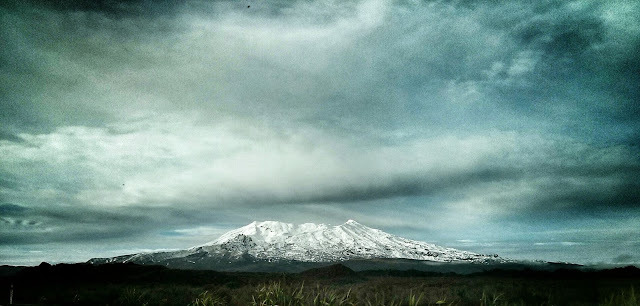 |
| Mt. Ruapehu/Mordor, Tongariro National Park |
Working on Your Working Holiday Visa
Under the Working Holiday scheme, you are eligible to seek employment in absolutely any industry you are qualified for. However, most employers will recognize you are on a temporary visa, so you may find employment difficult outside of the industries with high turnover rates such as hospitality, childcare, tourism, fruit picking, and construction/tradies. Most Working Holidayers find a part-time or full-time job in these fields, but it is not uncommon to find placement in IT, teaching, marketing, film, etc. Know how to sell your skills and you could find an appropriate industry job.
That being said, please keep in mind that Immigration NZ has designed this visa scheme for holidays. Most immigration agents will place emphasis on the fact that the country does NOT want you finding a serious job. New Zealand wants you to come for an extended holiday, rent a cute little van, tour the country and see the sights, maybe pick some apple trees to make a little extra cash, and then… LEAVE. I’m the kind of Working Holidayer that NZ absolutely does not want: the kind that doesn’t go home. I have Residency now and have always had legal and timely visas, but the point is that I arrived on a Working Holiday visa in 2012 and NZ quite prefers if those who arrive on these visas pack up and leave within 12 months (sorry you got stuck with me, New Zealand, but honestly I’m quite the catch). Further, Kiwis can be a little protective about good jobs going to non-New Zealanders. It's not something they freely admit to, but they go to great lengths to ensure there are no Kiwis capable of a job before they hire an international employee. The Working Holidayers are not supposed to swoop in and score a hot job. Be sure to stress to Immigration upon arrival that your mission in NZ is to see some waterfalls and go for a few hikes, not for any sort of career advancement.
If, after 12 months, you love New Zealand and don’t want to leave, there are options for visa extension or new visas depending on your situation. For my part, I recommend falling in love with a Kiwi citizen.
I originally flew to New Zealand on the cheapest... and most outlandishly awful flight of all time. Clearly our youths are the time to make bad decisions and take horrific flights just to save $100. I'm a little older, and wish to punish myself a little less now, so I've learned the less painful ways to fly to NZ from the States.
Air New Zealand's direct flights from LAX (or San Francisco) to Auckland are WORTH IT. You board a plane in Los Angeles at 10 or 11 pm, they give you a nice meal while you watch a movie, placate you with amazing NZ wines, and then you go to sleep and arrive 12 hours later in Auckland feeling fresh and ready for adventure. Just be good to yourself and book this flight. Bonus: Air NZ is the greatest airline in the world.
Do remember that New Zealand's high season is the southern hemisphere summer: December-February. Tickets skyrocket during this time as airlines capitalize on the northern hemisphere tourists who are trying to escape their winters.
Once you're here, you may fancy a flight to some of the other destination cities like Queenstown or Wellington. There are only two airlines which operate domestic flights: Air New Zealand and Australian-based airline, Jet Star. The best websites for booking domestic New Zealand flights are:
Booking Your Flight
I originally flew to New Zealand on the cheapest... and most outlandishly awful flight of all time. Clearly our youths are the time to make bad decisions and take horrific flights just to save $100. I'm a little older, and wish to punish myself a little less now, so I've learned the less painful ways to fly to NZ from the States.
Air New Zealand's direct flights from LAX (or San Francisco) to Auckland are WORTH IT. You board a plane in Los Angeles at 10 or 11 pm, they give you a nice meal while you watch a movie, placate you with amazing NZ wines, and then you go to sleep and arrive 12 hours later in Auckland feeling fresh and ready for adventure. Just be good to yourself and book this flight. Bonus: Air NZ is the greatest airline in the world.
Do remember that New Zealand's high season is the southern hemisphere summer: December-February. Tickets skyrocket during this time as airlines capitalize on the northern hemisphere tourists who are trying to escape their winters.
Once you're here, you may fancy a flight to some of the other destination cities like Queenstown or Wellington. There are only two airlines which operate domestic flights: Air New Zealand and Australian-based airline, Jet Star. The best websites for booking domestic New Zealand flights are:
- Skyscanner -- the travel search engine my partner prefers
- Grabaseat -- Air New Zealand's own "deal" site, where you can get awesome prices on flash bargains if your travel plans are flexible. I once flew Auckland to Wellington for $33 each way. That's amazing.
- House of Travel -- a Kiwi travel company which hosts pretty awesome domestic deals online
 |
| Kiwi Crossing in Tongariro National Park |
What You Need to Know About New Zealand Customs
Alternate title: Do Not Effing Bring Your Fruit into New Zealand.
This country has strict, STRICT biosecurity laws. Would you like to know why? Because irresponsible travelers bring one little orange onto the island and then bam!… a fruit fly epidemic threatens an entire nation’s crop production and its $4-billion export industry. Then, a million-person city has apocalyptic regulations of fruit movement imposed on it for months. No joke, they call it the "fruit fly lockdown," and if you live in an affected suburb, you aren't allowed to transport fruit in and out of the boundaries--that means no bananas in your school lunchbox, kid!
No, future visitors of New Zealand, I am not kidding-- and yes, it is serious business. Customs agents do not mess around with the presence of food, live cultures, or even dirt in your luggage or on your person. You will be found and you will be heavily fined.
Over the years of traveling to and from New Zealand and hosting visitors from abroad, I've become increasingly obsessive about what I bring with me from overseas, and what my friends and family do. Obviously, I don't want to be fined thousands of dollars for an oversight, but it's more than that. I've now taken on the crazy Kiwi mentality of protecting this heartbreakingly beautiful, hyper-sensitive little ecosystem we call Aotearoa.
Don't risk our environment by forgetting you packed an apple for a mid-flight snack. Dispose or Declare every single risk-item you bring with you. I've seen a woman taken away for "questioning" for failing to declare a box of unopened chocolates. Start your holiday right, and leave all food and unclean outdoor equipment behind. Please and thank you.
When you're planning to spend a year abroad, there's heaps to consider before you even leave home, but I promise it'll be so worth the effort. There's adventure waiting for you in this magical land where the pure, good life is still revered.
No, future visitors of New Zealand, I am not kidding-- and yes, it is serious business. Customs agents do not mess around with the presence of food, live cultures, or even dirt in your luggage or on your person. You will be found and you will be heavily fined.
Over the years of traveling to and from New Zealand and hosting visitors from abroad, I've become increasingly obsessive about what I bring with me from overseas, and what my friends and family do. Obviously, I don't want to be fined thousands of dollars for an oversight, but it's more than that. I've now taken on the crazy Kiwi mentality of protecting this heartbreakingly beautiful, hyper-sensitive little ecosystem we call Aotearoa.
Don't risk our environment by forgetting you packed an apple for a mid-flight snack. Dispose or Declare every single risk-item you bring with you. I've seen a woman taken away for "questioning" for failing to declare a box of unopened chocolates. Start your holiday right, and leave all food and unclean outdoor equipment behind. Please and thank you.
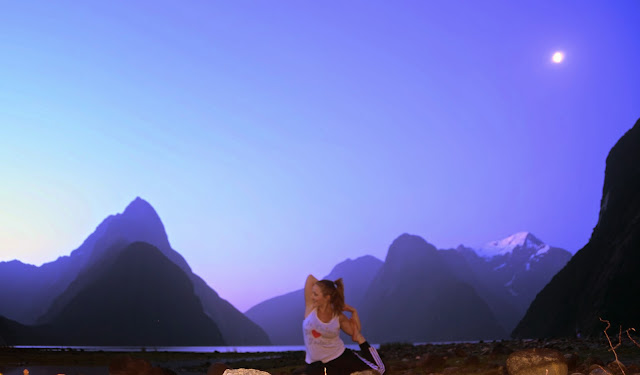 |
| Milford Sound, Fiordland |
When you're planning to spend a year abroad, there's heaps to consider before you even leave home, but I promise it'll be so worth the effort. There's adventure waiting for you in this magical land where the pure, good life is still revered.
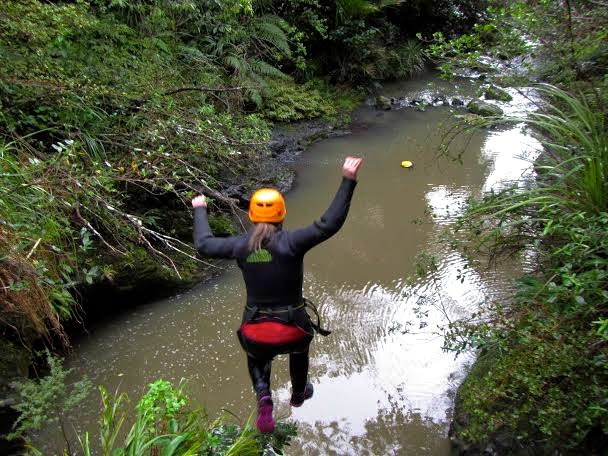 |
| Canyoning and cliff jumping in the Waitakeres |
 |
| Summit of the Tongariro Crossing (we began the hike at 5am to be the first to reach the famous Emerald Lakes)! |
 |
| On the 19.4 km Tongariro Crossing hike! |


